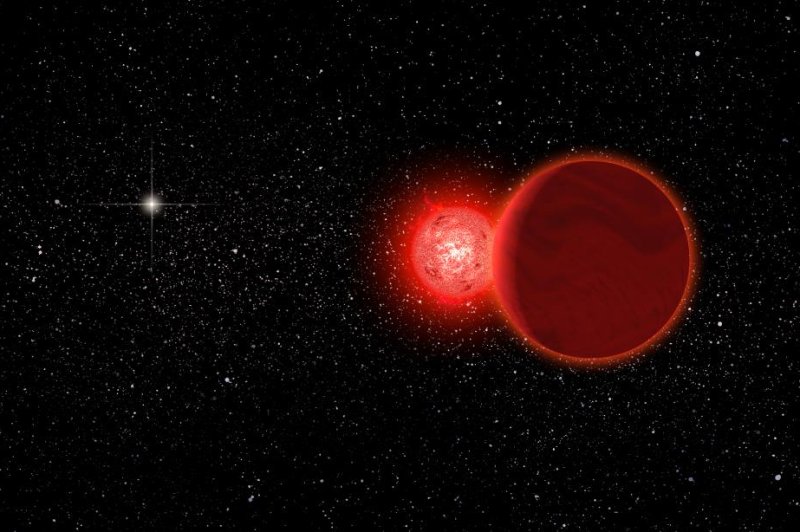An illustration reimagines Scholz's flyby, with the sun rendered as a distant twinkle. Photo by Michael Osadciw/University of Rochester
ROCHESTER, N.Y., Feb. 18 (UPI) -- Scientists say an alien star system nearly sideswiped the sun some 70,000 years ago, coming to within 0.8 light years of the solar system -- five times closer than the next closest passing.
The star, known formally as WISE 0720-0846, was only recently discovered. Over the last two years, astronomers have been able to study the star's movements. Initial measurements of its velocity and trajectory suggested the star was either on a path toward the sun or had passed by before.
Further analysis of the star, called Scholz's star (for its discoverer), revealed an angle and tangential velocity suggesting a previous flyby.
"Most stars this nearby show much larger tangential motion," Eric Mamajek, associate professor of physics and astronomy at the University of Rochester, explained in a press release.
"The small tangential motion and proximity initially indicated that the star was most likely either moving towards a future close encounter with the solar system, or it had 'recently' come close to the solar system and was moving away," Mamjek added. "Sure enough, the radial velocity measurements were consistent with it running away from the Sun's vicinity -- and we realized it must have had a close flyby in the past."
Scholz's star, a red dwarf, is part of a binary system. When it passed by the sun and the Earth, it brought along its companion -- a brown dwarf, a failed star with too little mass to initiate or sustain stellar fusion. Scholz's star is now more than 20 light years away.
The calculations of Mamajek and his colleagues suggest that WISE 0720-0846 passed through the outer portion of the Oort Cloud, the ring of icy planetesimals that forms the cosmographical boundary of the solar system. Disturbances in both the inner and outer Oort Clouds are thought to initiate the formation and ejection of comets.
"There are trillions of comets in the Oort cloud and likely some of them were perturbed by this object, and some may have been perturbed onto orbits which will bring them into the inner solar system (in the distant future)," Mamjek told BBC News. "But so far it seems unlikely that this star actually triggered a significant 'comet shower.'"
The new study was published in Astrophysical Journal Letters.















